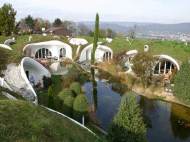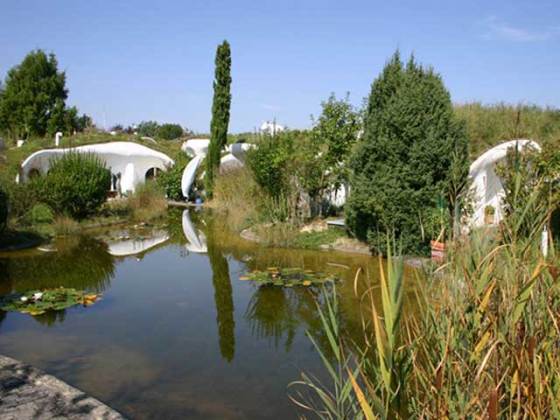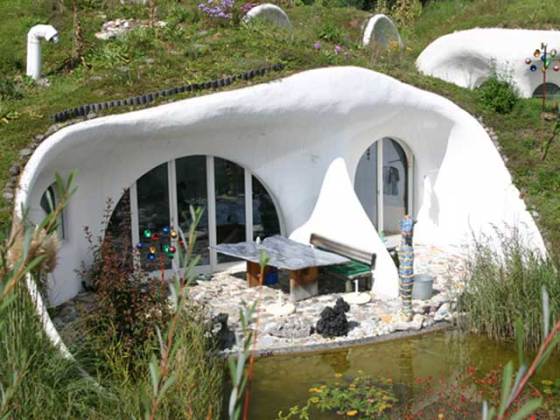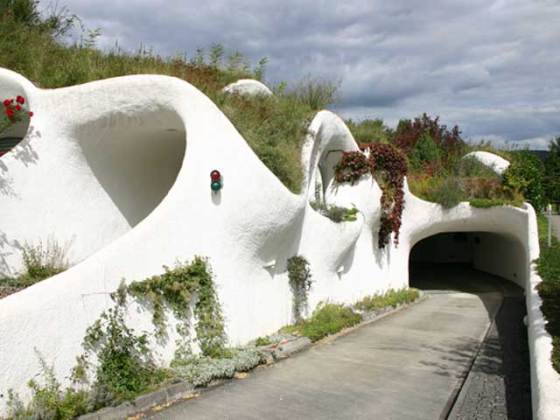Green architecture – Earth House Estate Lättenstrasse
 Earth houses are based on the interpretation of an environmentally conscious, ecological and progressive architecture. They stand out due to their closeness to nature and allow an experience beyond the usual four walls and their right angles. The earth house concept uses its surroundings as an advantage – the surroundings are not adapted to the building, the house is shaped in order to preserve the natural environment.
Earth houses are based on the interpretation of an environmentally conscious, ecological and progressive architecture. They stand out due to their closeness to nature and allow an experience beyond the usual four walls and their right angles. The earth house concept uses its surroundings as an advantage – the surroundings are not adapted to the building, the house is shaped in order to preserve the natural environment.
Designed by Vetsch Architektur, Earth House Estate Lättenstrasse, is a beautiful example of a small residential settlement which consists of earth houses. The earth-covered houses are grouped centered around a small artificial lake with the entrance well hidden and integrated at the side of the settlement. Aside the aesthetics, it also guarantees the secondary access to some of the particular houses through the subterranean parking lot.
The residential settlement, located at Dietikon, Switzerland, consists of nine houses, three 3 bedroom, a 4 bedroom, a 5 bedroom, three 6 bedroom and a 7 bedroom house. In order to maximize the natural lighting, the daytime areas are situated towards the south, while the nighttime areas face the north. All the bathrooms get natural light through rooftop windows. Earth houses are built using wide glass facades and dome-lights, allowing rooms to become bright and suffused with light. Dome-lights provide natural light for bathrooms and secondary rooms.
Bathrooms and the stairs for the basement are located in the middle of houses. The basement, as well as the parking lot is built with conventional techniques. On the other hand, the ground floor is constructed with the typical earth house construction principle of sprayed concrete. Additional isolation consists of recycled glass, an absolute environment friendly product. The water protection is added directly on the sprayed concrete. On top of the isolation is a protective layer with natural earth, which can be used to grow grass or plants on the rooftop.
Earth houses are designed as integral arches – one of the direct consequences of this kind of engineering is highly efficient insulation. The reduction of needed heating results in energy savings of up to 50%. The specific architecture of earth houses makes them nearly airtight, thus making rooms completely draught-free. Humid room air cannot penetrate the structure and therefore prevents structural damage.
In modern earth houses unheated rooms should not randomly border on heated rooms and the building should be divided into several heat zones. The specific architecture of earth houses leads to an efficient subdivision of the building into several heat zones. Another advantage is the higher air humidity of 50 to 70% as opposed to overheated rooms of conventional houses in winter. The interior walls of a modern earth house are furnished using loam rendering which provides superior humidity compensation.
Furthermore, as earth houses are impermeable, they can be considered ideal for controlled air conditioning. Integral air conditioning systems provide for ventilation and, warm water and floor heating, which can be provided by solar heating or using free energy from the environment.
The unique architecture of earth houses protects them extremely well against severe windstorms. They cannot be torn away or tipped over by strong winds. Structural engineering and, above all, the lack of corners and exposed parts (roof), eliminate vulnerable surfaces which would otherwise easily suffer from storm damage. However, the same lack of corners on the inside walls make the rooms a bit inadequate for traditional furniture or large paintings.












What a beautiful website. Thank you for sharing
Здравствуйте! The specific architecture of earth houses usually leads to non-righted, round-shaped walls, which can cause problems concerning the interior decoration, especially regarding furniture and large paintings. However, these problems can be anticipated during the conceptual design of an earth house.